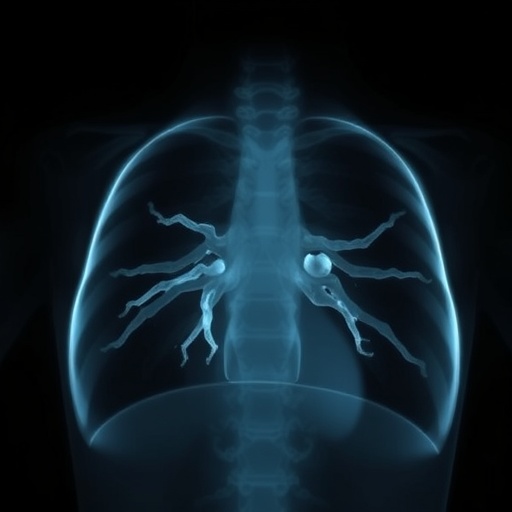In a groundbreaking study that pushes the boundaries of microbial genetics and infectious disease research, scientists have uncovered an unprecedented glimpse into the within-host genetic diversity of Streptococcus pneumoniae serotype 3 during an extended carriage period in a single, healthy adult. This viral breakthrough not only challenges long-held assumptions about bacterial colonization but also deepens our understanding of how pathogens adapt and evolve silently within the human body over time.
Streptococcus pneumoniae, or pneumococcus, is a formidable bacterium often lurking harmlessly in the human nasopharynx. However, certain serotypes of this bacterium can transition from benign colonizers to aggressive agents causing severe infections such as pneumonia, meningitis, and sepsis. Serotype 3 is of particular interest due to its notorious virulence and resistance to vaccines and antibiotics. Despite its clinical significance, the genetic diversity that occurs within serotype 3 populations during prolonged carriage in healthy individuals has remained largely elusive—until now.
Led by a multidisciplinary team, this novel research tracked the pneumococcal populations residing in the respiratory tract of a healthy adult over an extraordinary one-year period. By meticulously sampling and sequencing bacterial isolates throughout this time frame, the researchers unveiled a complex, shifting landscape of genetic variants that coexist and evolve dynamically within the host. Their findings illuminate the remarkable plasticity of serotype 3 pneumococci, which undergo subtle yet impactful genetic changes without causing overt disease.
What makes these findings particularly exciting is how they upend the traditional view of bacterial carriage as a static state. Instead, the data reveal a microbial battleground inside the host where genetic mutations, recombination events, and selective pressures continuously shape the pneumococcal population. This evidence highlights the importance of investigating bacterial evolution in vivo, as it unveils the mechanisms underlying pathogen persistence, immune evasion, and potentially, the eventual transition from harmless carriage to invasive disease.
The researchers employed state-of-the-art whole-genome sequencing to capture the fine-scale genetic variations present among multiple isolates sampled longitudinally. They detected numerous single nucleotide polymorphisms, gene content variations, and phase variation events, collectively underscoring the dynamic genomic flux within this serotype during the sustained carriage period. Intriguingly, many of these genetic alterations occurred in loci linked to antigenic properties and antibiotic resistance, suggesting ongoing adaptation in response to host immune pressures and environmental factors.
One of the most compelling aspects of this research is its revelation of how pneumococcal populations act as diversified quasispecies during carriage, analogous to viral populations in chronic infections. This concept introduces a paradigm shift in how bacterial colonization is perceived, emphasizing the need to consider within-host diversity when developing therapeutic interventions and vaccines. By understanding the full spectrum of genetic variants present, medical strategies can be tailored to outmaneuver the microbe’s evolutionary tactics.
Moreover, this extended carriage study raises important questions about transmission dynamics. The presence of a genetically diverse bacterial population in a presumably asymptomatic host suggests that such hosts might serve as reservoirs for spreading multiple pneumococcal variants simultaneously. This phenomenon could complicate efforts to control pneumococcal disease outbreaks and necessitates more nuanced surveillance approaches that capture within-host diversity rather than relying on single-isolate analyses.
The implications for vaccine design are equally profound. Current pneumococcal vaccines target specific capsular serotypes to elicit protective immunity. The observed within-host genetic diversity, including variations affecting capsule synthesis and surface-exposed proteins, may contribute to vaccine escape and ongoing disease burden. Consequently, this research advocates for next-generation vaccines that incorporate a broader understanding of bacterial genomic plasticity and the potential for antigenic variation within the same serotype.
Another noteworthy discovery lies in the spatial and temporal aspects of pneumococcal genetic changes. By mapping the timeline of variant emergence, the study reveals patterns suggesting selective sweeps and niche competition within the host environment. These dynamics underscore the intricate interplay between microbial ecology and host factors, including immune status, microbiota interactions, and local microenvironments, all of which collectively influence bacterial evolution.
From a methodological perspective, the study exemplifies the power of integrating longitudinal sampling with high-resolution genomic analyses to capture an otherwise hidden evolutionary narrative. It sets a new standard for investigating pathogen biology in situ, opening doors for similar studies in other chronic or persistent colonizers such as Staphylococcus aureus, Haemophilus influenzae, and even viral pathogens.
Finally, by focusing on a healthy adult, the research dispels the notion that significant pathogen evolution only occurs in the context of disease or immunocompromised states. Instead, it portrays the human body as an evolving ecosystem where complex genetic processes continually unfold, often unnoticed. This realization prompts a reevaluation of surveillance and treatment paradigms to encompass the silent but significant evolutionary battles waged within asymptomatic carriers.
In summary, this landmark investigation delivers crucial insights into the within-host evolutionary dynamics of pneumococcal serotype 3 during prolonged carriage. It exposes a previously hidden layer of microbial complexity that could inform everything from disease prediction and control to vaccine and antibiotic strategy development. As we grapple with the challenges posed by adaptable pathogens, studies like this one underscore the imperative to explore microbial diversity not just at the population level, but deep within the individual hosts where these microscopic battles shape the future of infectious disease.
This research opens an exciting frontier where microbiology, genomics, and immunology converge to paint a richer, more nuanced picture of pathogen biology. The profound understanding gleaned from this work promises to transform how the scientific and medical communities approach pneumococcal disease and beyond. As we continue to unravel the mysteries of microbial adaptation, such studies pave the way toward smarter, more effective interventions that can stay one step ahead in the ongoing arms race between humans and microbes.
Subject of Research: Within-host genetic diversity and evolutionary dynamics of Streptococcus pneumoniae serotype 3 during prolonged carriage.
Article Title: Within-host genetic diversity of pneumococcal serotype 3 during one-year prolonged carriage in a healthy adult.
Article References:
Sibale, L.L., Lo, S.W., Kalata, N. et al. Within-host genetic diversity of pneumococcal serotype 3 during one-year prolonged carriage in a healthy adult. Nat Commun 16, 8920 (2025). https://doi.org/10.1038/s41467-025-63974-2
Image Credits: AI Generated




